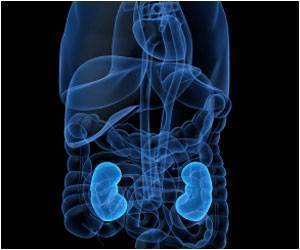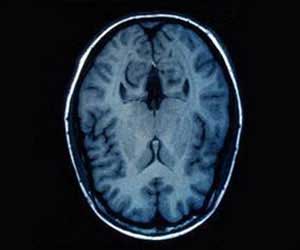A research team led by investigators at the Virginia Tech Carilion Research Institute has demonstrated the first rapid measurements of dopamine release in a human brain

"A startling discovery was that the dopamine signal appeared to be a very good indicator of the market value and in many instances a good predictor of future market changes," said Kenneth Kishida, a postdoctoral associate with the Human Neuroimaging Laboratory and the lead author on the report. Interestingly, the choice expressed by the subject did not always correspond with the prescient brain chemistry, he said.
The research was published on Aug. 4, 2011, in the Public Library of Science journal, PLoS ONE, in the article "Sub-Second Dopamine Detection in Human Striatum," by Kishida; Stefan G. Sandberg, senior fellow with the Departments of Psychiatry and Behavioral Sciences and Pharmacology, University of Washington, Seattle; Terry Lohrenz, assistant professor in the Department of Neuroscience, Baylor College of Medicine; Dr. Youssef G. Comair, professor and chief, Division of Neurosurgery, American University of Beirut, Lebanon; Ignacio Saez, assistant professor at Virginia Tech Carilion Research Institute; Paul E. M. Phillips, associate professor, Departments of Psychiatry and Behavioral Sciences and Pharmacology, University of Washington, Seattle; and Montague, senior author.
The researchers adapted their sensors to existing technology used for functional mapping of the brain during surgical implantation of deep-brain stimulation devices. "Deep-brain stimulation is typically used in the treatment of Parkinson's disease," said Montague. "Uses for treating other neurological disorders are also being investigated, though, and may open new avenues for the technology we developed."
The researchers applied criteria that employed experimental methodology that is "safe to the patient, compatible with existing neurosurgical apparatus and the operating-room environment, and capable of sub-second detection of physiological dopamine," they state in the article. They modified existing sensor technology to improve signal conductivity, creating a microsensor that shares the electrochemical properties of existing electrodes yet can detect sub-second dopamine release. "Even more important, the new microsensors are biocompatible and can be sterilized without affecting performance, " Kishida added.
The new instrument was demonstrated in a single human subject, a consenting patient with late-stage Parkinson's disease who was undergoing elective surgery for deep-brain stimulation electrode implantation. The new microsensor was placed in the patient's brain and dopamine release was monitored as the patient engaged in a decision-making game. The current value and recent history of a stock market was graphically represented on a laptop monitor. The subject chose the proportion of a portfolio initially valued at $100 to be invested in the stock market. Decisions were submitted by pushing buttons on handheld response devices. Following the submission of each decision, the market was updated. The final portfolio determined the actual payout at the end of the experiment.
Advertisement
To test this hypothesis, the researchers constructed a trader model that made decisions based on the fluctuations in the dopamine signal leading up to the market price changes. This decision model invested 100 percent, or all in, when the dopamine slope was positive and 0 percent, or all out, when the slope was negative. The researchers report that, "Over the five markets played, this trader model earned 202 points (a gain of 175 percent), more than two times the amount earned by the subject's expressed behavior. These data demonstrate that the information encoded in the dopamine signal of this patient is potentially useful for economic decision making."
Advertisement
Writing in the PLoS ONE article, the researchers conclude, "This methodological demonstration opens the door to future investigations utilizing sub-second chemical measurements in the human brain, which should yield important insights into the role of dopamine signaling in human decision-making."
Source-Eurekalert










